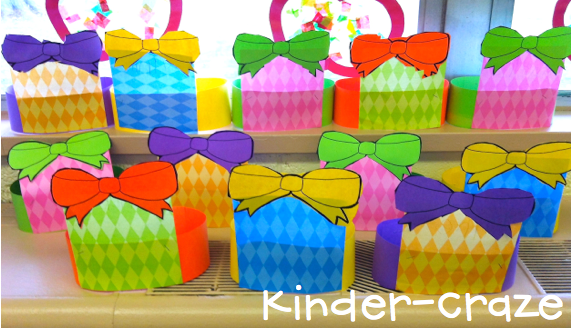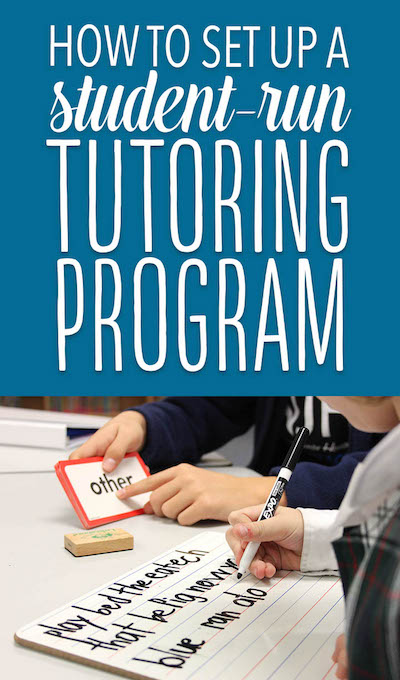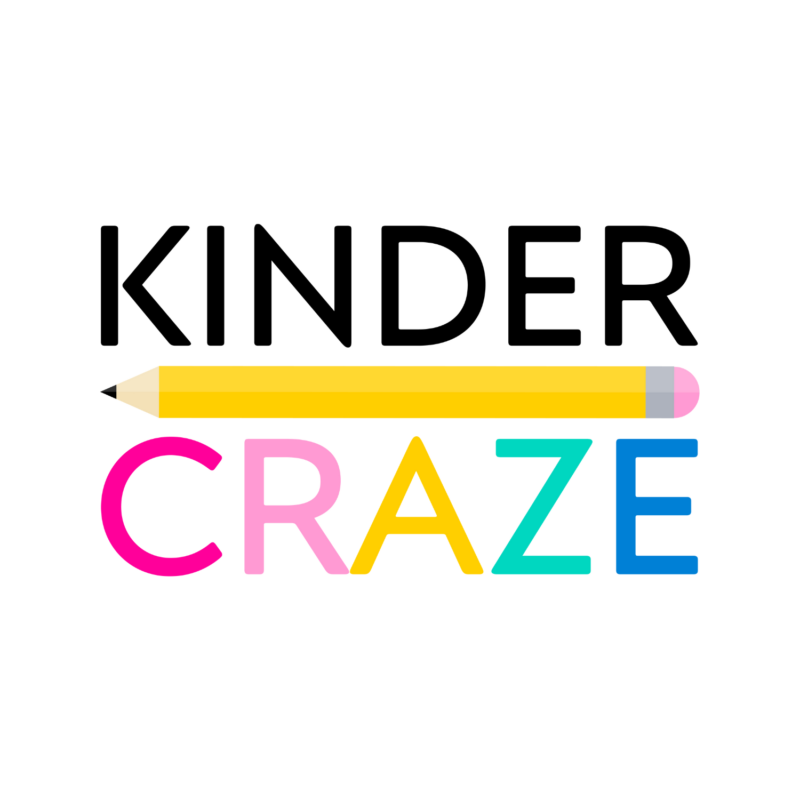

I may teach kindergarten at my school, but I am also a faculty advisor for my school’s National Junior Honor Society. For several years, the NJHS has provided tutoring services to struggling students once a week after school. The program has evolved considerably with each passing year and this year we finally have the tutoring program down to a science. I’ll take you step-by-step through the process of setting up a student-run tutoring program for struggling students at your own school. I’ll also share anecdotes and examples of lessons I have learned along the way from launching our own student-run tutoring program.
This post contains affiliate links. I receive a small commission each time someone makes a purchase through one of my links, which helps to support the blog. Despite the links, it is not my intent to sell anything. I personally know how overwhelming it can be to assemble materials for a program like this and I want to share the tools and materials that worked for me in the hopes that they will ease help a fellow teacher to organize a similar program in her own school with ease.

The success of your tutoring program will depend heavily upon the tutors you have available. You definitely want to make sure you have knowledgeable students that are helpful and demonstrate some leadership abilities to run the program. It works out perfectly that the NJHS students at my school fill this role. They are 7th and 8th graders, which makes them the oldest group in the student body. Their membership in NJHS is dependent on academic, leadership, service, character and citizenship. Those criteria make them excellent candidates to run a student tutoring program, but you could use any responsible older students at your school.
Once you have an idea of which students will be volunteering in a student-run tutoring program, you will need to determine how often they will donate their time as tutors. Consistency is the key for the tutees (children being tutored). To serve them best, those students come to tutoring every single week. But that doesn’t mean that the tutors need to be present every week.
Last year, we had a very large group of NJHS students at my school. Tutoring was offered every Thursday after school, but we had enough NJHS members to create four teams, which we put on a four-week rotation, which meant that those tutors volunteered every 4 weeks. As a result, the children being tutored, had a rotation of 4 different people that they worked with on Thursday afternoons.
This year, our NJHS is much smaller and we don’t have enough tutors to adequately serve the needs of the tutees. So this year, we have two tutoring teams. This year’s tutors are on a two-week rotation and every child being tutored only has two tutors.
It’s also worth noting that a teacher is present at every tutoring session to supervise the activity. There are four teachers at my school that rotate supervising the NJHS tutoring program. The supervising teachers have a schedule similar to the first example shown above.
Regardless of how many tutors you have or how you rotate them, it is imperative that you take the time to train your tutors ahead of time. We spent a full hour after school one day going over every single detail of their responsibilities. As a kindergarten teacher, this was right in my wheelhouse. We covered all of these items in tutor training:
How to enter and exit the media center (quietly!)
Where to place coats/backpacks
Where tutees will place their coats/backpacks
Where to move supplies to and from for everyone to access
How to interact with tutees
How to care for supplies
What to do if a supply runs out
How to clean up at the end of tutoring
Where to store supplies between tutoring sessions
And of course, how to complete each of the tutoring tasks.
(While this is certainly an important topic, it is equally important to discuss all of the minute details as well for the tutoring program to operate smoothly and effectively.)
Once you have an idea of how many tutors are available, you can figure out which groups of students tutoring will be offered to. There is no clear cut answer for this question. It will depend upon the unique needs of the students at your school, but I can offer suggestions based upon what has worked (and what hasn’t worked) for my school.
In the past, any student that received pull-out support from our learning specialist was eligible for tutoring. The grade-levels this service was offered to has varied considerably since I became a faculty advisor. At our fullest capacity, we offered tutoring services to students in grades 1-8 in math and reading. This was the absolute worst year for tutoring. We didn’t have enough tutors to meet the needs of students receiving services, the tutees were responsible for bringing their own materials each day (I’m sure you can guess how many students came prepared), and the tutors didn’t receive any training ahead of time.
The tutoring arrangements have evolved considerably over the past few years. We now offer highly structured tutoring to much more limited scope of children, all resources are provided by the program and all tutors were trained ahead of time.
Whatever criteria you consider for inviting students to receive student-run tutoring support, make a plan and stick to it. This year, we decided to focus on the basics in our tutoring program. As tutees get older, they didn’t enjoy staying after school for extra practice. This attitude made it very difficult for the tutors to make a positive impact. Since the youngest students were the most receptive to receiving extra help (and all the research shows that interventions are most effective in young students), we decided to scale way back this year and offer the program to first and second grade students only.
Any first and second grade students that receive services in the learning center during the school day are invited to receive after-school tutoring services. It’s an easy line in the sand and simple way to determine who will be offered additional support after school. Each time a new first or second grade referral is made for the learning center, that teacher passes the name along to me and I send a tutoring invitation home.
Like all activities for young children, parental consent must be given for students to receive tutoring support. I send home a simple permission form with dismissal and parent contact information. Once I receive consent, supplies are prepared for the tutee and he/she is added to the roster.
While the wheels are turning in anticipation of students joining the program to receive tutoring services, I simultaneously begin gathering materials for the tutoring program. The scope of the program will determine the amount of supplies needed. From a quantitative perspective, you will obviously need enough basic supplies (pencils, highlighters, folders, binders, etc) for each child receiving services. Additionally, you will need to provide grade level and content-specific resources for the range of children in your tutoring program.
Narrowing the scope of our tutoring program this year greatly helped to simplify the acquisition of materials. We are currently only offering reading support for first and second graders. There are many kinds of tools available to help students in this area, but I needed materials that would be easy for the tutors to understand and implement without relying on the supervising teacher for support or additional instruction.
For first graders, I decided to focus on the areas of fluency, sight word skills and leveled reading practice. The second graders would focus on fluency, sight word skills, leveled reading practice and comprehension. The activities are repetitive, but since tutoring only occurs once a week, the youngsters don’t complain and the tutors always know exactly what to do and how to help.
Here are the activities and supplies I purchased for the students to work on during tutoring. All students use flash cards to write and read sight words. I purchased multiple packs of Level A, B and C sight word flash cards on Amazon.
The children being tutored need just as many (if not more) experiences writing sight words as they do reading them. For this purpose, I purchased whiteboards and erasers from Lakeshore Learning as well as a supply of thin black dry erase markers.
The tutors “quiz” the youngsters by asking them to write a sight word without showing the word. After a child writes the word, the tutor reveals the flash card and the tutee looks at the word he/she wrote. If the word is spelled incorrectly, the tutor helps the child to fix the word. It feels like a game, but it’s great practice for the first and second graders. Plus, they love the novelty of using a whiteboard for sight word practice.
We don’t use a system for assessing which words a child knows within the tutoring program. Nor do we do any formal recording of sight word mastery. It’s just a game that is helpful practice. The seventh and eighth graders do a lovely job of providing support, but detailed record keeping is not their strength. Last year’s tutors were expected to do more record keeping and it simply did not work. This year, we are keeping things clean and simple. If a child masters all of the words they practice with their tutor, the tutor simply selects more challenging words.
Of course, sight word mastery is only part of the equation for creating able readers. Developing reading fluency is another piece of the puzzle. For this task, we use a few different resources.
First up: the wonderful Reader’s Theater Fluency Plays from Kristin at A Teeny Tiny Teacher. These simple little plays are a big hit in my kindergarten classroom. They’re short, appropriate, and every child loves reading a play.
Kristin has many different Reader’s Theater plays available in her TpT store. They vary by season and grade level, so you can easily find a set that will meet your individual needs. She even has a Valentine’s Day set available for FREE!
The Reader’s Theater plays are a fantastic, engaging resource. They also take approximately 1 minute for students to read. They’re a fantastic confidence booster (which serves a huge purpose for these students), but I also wanted to provide an opportunity for the tutees to be mindful of their growth and get a little metacognition going. For that, we use the Five Step Fluency pages from Jodi at Fun in First.
These pages are a gold mine. First of all, Jodi offers three different sets of fluency packs for students with different ability levels. The first grade and second grade students have different pages to work on. Here, you can see a first grader working on a set.
The basic premise of these pages is so easy and also so genius! Basically, a child reads the same text 5 times. The first time, the child times how many words they can read in one minute. Then for steps 2-4, the child reads the pages again and completes a simple word work activity. On the fifth and final time, the child again uses a 1-minute sand timer and tries to read more words than their initial read-through. There is a space on the page for the child to indicate whether or not he/she beat his first score.
I also love, love, LOVE that there are word work opportunities contained in these pages. Sometimes children look for short u words, sometimes they try to find a_e words, sometimes it’s compound words. There are so many great word work skills addressed in this set.
Jodi created great step-by-step instructions for this activity. I printed a color copy for each child, placed the pages in sheet protectors and added it to every tutoring binder. If (for some reason) a tutor forgets how the pages work or what to do, they can read the instructions! It’s so wonderful.
Gaining fluency and sight word mastery are both important, but those skills don’t serve any real purpose if comprehension is not happening. Our student volunteers are great helpers, but they don’t intuitively know how to help young readers develop comprehension and we don’t have the time for in-depth training in this area. For this skill, it was imperative that we acquire tools that made it as easy as possible for the tutors to assist and support their tutees. For this purpose, we purchased an SRA Reading Laboratory kit from McGraw Hill.
The kit contains short stories and comprehension questions. A separate answer key for each story booklet is also included in the kit. To use the kit, a tutor grabs a story the child hasn’t read yet. The tutee reads the text independently, lays a clear sheet protector over the questions and answers them with a dry erase marker. The tutor helps if he/she is needed, then checks the child’s answers, and discusses incorrect responses with the tutee. The tutor then marks how many responses were correct on a recording sheet provided in the kit. This is the only record-keeping that our tutors do and it is very helpful.
We use the SRA Reading Laboratory for comprehension, but it also includes some word work practice, which is an added bonus.
The final type of activity that happens in our student-run tutoring program is plain ol’ regular reading. The tutees are asked to bring a book that they can read to each tutoring session. The best source of these books are guided reading materials from their classroom teachers. Generally, the students read these books to their tutors, but occasionally, the tutor will read the book out loud if the child he/she is assisting needs a break.
Once you have a plan for the activities in a student-run tutoring program, the next step is to manage all of the necessary supplies. All supplies are placed on a table. Each student being tutored has an individual binder with personal supplies, but several items are shared.
From left to right, you can see:
The tutors handle all of the supplies. Students that are enrolled in the tutoring program wait patiently while their tutor gathers all necessary materials. The tutors each made several trips to the table over the course of the hour and it works out seamlessly.
I have learned from experience that all participants in the program (tutors and tutees) take better care of supplies if they have to use the same item week after week. Rather than establishing community supplies for small items (pencils, dry erase markers and erasers, timers, etc) we manage as many of these items as possible in individual student binders.
I found a great deal on binders at Costco this fall. You can also purchase them on Amazon. I color coded the covers that I inserted into the binders. Blue is or Grade 1 and Pink is for Grade 2. Why did I chose those colors? Easy. Because I already owned a giant pink pink bin and a giant blue bin. I color coordinated the covers to match the bins for easy storage. No matter the color scheme, I highly recommend using Astrobrights papers. The colors are so vibrant.
A small zipper pouch is the first thing you see when you open a student binder.
Here are all of the materials contained in the pouch and how we use them:
Remember all of those sight word flashcards I bought on Amazon? I did not buy one set per child. I actually bought one set for every 3 children. No child needs to have that many flash cards at one time. So I took the sets and rubber banded them into smaller groups. Once a child knows every single word, the tutor trades the first set for a fresh set of words.
We use the highlighters during the Word Work section of the 5 Step Fluency pages. A yellow crayon would also suffice. So would a pencil. But a highlighter is much more fun.
The tutor uses the pencil to record the date on the SRA Reading Laboratory log and the crayon is used to color correct responses on the log. My preference is always to use Ticonderoga pencils. They sharpen great and erase cleanly. The pencil is also used on occasion to write notes to me (the tutoring coordinator). More on that in a minute.
The sand timer is used during the 5 Step Fluency pages. Children track how many words they read on their first attempt at the passage. Then, after completing steps 2-4, the final step is to time themselves reading for one minute again and see if their speed improved.
The whiteboard marker and eraser are used for sight word practice on the whiteboard. They are also used by second grade students when they read passages from the SRA set.
Every binder also includes a few blank Post-It notes. If at any time, a particular supply runs out or there are any other issues that arise, the tutor uses the pencil to write a note to me, sticks the Post-It Note on the front of the binder and sets the entire binder on the table outside my classroom door so I see it right away the next morning and can easily remedy the problem. So far this year, I think I have had 2 students write Post-It Notes for me.
As you would expect, the binder also includes papers inside. A short and long vowel chart is tucked into the front pocket. (The tutors are great readers, but they forgot all about short and long vowel sounds several years ago. The chart helps the tutors to help the students accurately highlight identify words in the 5 Step Fluency word work). Several bright pink reminders are also tucked into the front pocket that are reminders to bring reading materials. If a tutee forgets to bring a book, the tutor gives the a bright reminder note to take home so the child will be more prepared next week.
Other items are also included:
That’s it!
If you’re interested in starting a student-run tutoring program at your school and you want a place to start for assembling student binders, I have good news! You can download sample copies of the materials I have created for the program. It includes a parental consent form, binder cover, short and long vowel chart, and record-keeping items. And it’s yours for FREE. Enter your email below to get your free Tutoring Starter Kit, then check your inbox.


I’m a former kindergarten teacher turned work-from-home mom. I still love sharing ideas and resources to make teaching easier, so you can focus on what really matters in the classroom. When I’m not working on the blog, you’ll find me chasing kids around the house with a cold cup of coffee in my hand (some things never change even once you’re out of the classroom!)

©2021 Kinder Craze. All Rights Reserved.

9 Responses
Oh this has me thinking! I would love to start a tutoring group. Thank you…Thank you.
Ok. I am seriously in love with this idea. Do you think 5th graders would be appropriate tutors for 1st grade? They are the oldest group in our school. I feel like this would be an awesome thing to begin! Our summer reading program for k-2 was cut a couple years ago because of funding. I feel like we could bridge a little of the gaps by doing this.
Hi Kristy! I think it has potential for 5th graders. The activities are SO simple. The first graders just need a little guidance. I think with a properly structured environment and enough “training” for the tutors, it could work! It could also be a meaningful leadership experience for the 5th graders.
thank you for sharing your program and very thorough description. I will be tutoring kindergarteners, do you have ideas/suggestions of specifics to target and work towards mastery to be able to thrive in first grade. A few of these students will not be retained. Any resources/blogs to recommend would be appreciated.
Hi Lesly,
In my experience, kindergarten students are the easiest to provide support for. They can learn so much from just being read to and practicing the most basic items. Many teachers use my Interactive Sight Word Readers in the classroom because they provide essential sight word practice AND give the student a book to take home with text that is simple enough. I’m also a big fan of the Word Family Galore resources that Marsha from A Differentiated Kindergarten created and sells on TpT. A Pinterest search of “kindergarten word work” may also be helpful to you. I’m sure you will find many activities that are just right for the students you will be tutoring.
WOW–words can’t express how absolutely WONDERFUL that you shared your details of setting up/running/fine-tuning a student-led tutoring program!!!!! I am beyond excited to try this at our school this year and can’t explain how very thankful I am that you posted and shared all this information and insight Maria!!!!
Many thanks and more,
Sarah
Hi Sarah,
I am SO overjoyed to hear that this post was helpful to you. I wish you all the best in getting your tutoring program up and running!
Thank you so much for this information.
Thank you for this wonderful resource! I ordered the tutoring start up kit, but the download was only 3 pages and didn’t include the binder cover and all of the forms. How do I access this? Thank you!